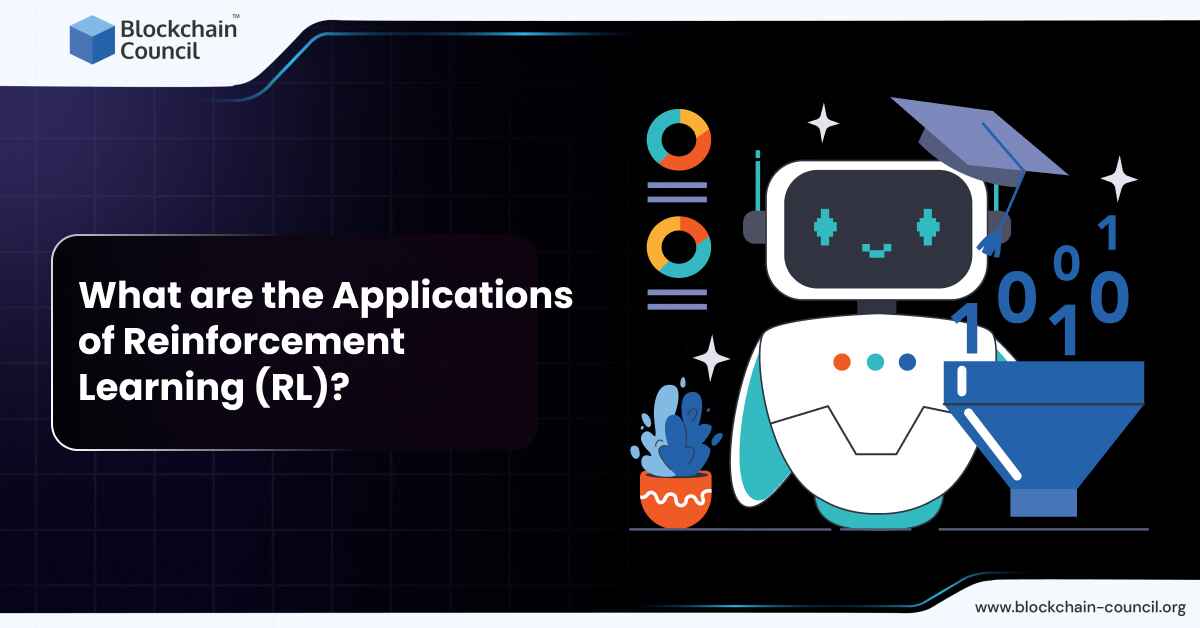
- Blockchain Council
- September 02, 2024
Summary
- Leonardo AI is a leading platform in AI-driven art generation, offering a diverse range of pre-trained image models to cater to various artistic styles and preferences.
- Getting started with Leonardo AI involves whitelisting your email, creating an account, and familiarizing yourself with its features, including PhotoReal and Alchemy V2.
- To create artwork, users can choose a base image, edit it using AI canvas tools, and generate AI art by providing text prompts describing their desired outcome.
- Crafting effective text prompts involves describing the desired image concisely and incorporating elements such as subject, medium, style, composition, color, and lighting.
- Users can enhance their prompt crafting skills by learning from the community, utilizing prompt generation tools, and experimenting with different phrases and details.
- Leonardo AI also allows users to train custom image models using their datasets, ensuring personalized and tailored AI-generated artwork.
- Steps to train a custom image model include dataset preparation, avoiding overfitting, maintaining image quality and consistency, and training the model on Leonardo AI’s platform.
- Once trained, users can generate images reflecting their trained style and preferences, expanding the possibilities for creative expression.
- Leonardo AI is hailed for its innovation, versatility, and supportive community, offering not just a tool but a gateway to a new era of creativity.
In this era of digital creativity, AI-driven tools are reshaping the art landscape, offering unparalleled possibilities to creators at all skill levels. Among these groundbreaking tools, Leonardo AI stands out as a beacon for artists, designers, and innovators seeking to push the boundaries of imagination and bring their visions to life. This article will guide you through the fascinating world of Leonardo AI, showcasing how to get started with it and harness its capabilities to generate stunning artwork. Whether you’re a seasoned artist or a curious newcomer, Leonardo AI presents an opportunity to explore, create, and transform your artistic endeavors.
What is Leonardo AI?
Leonardo AI is a cutting-edge platform designed to generate AI-powered images, providing users with an easy entrance into a vast array of pre-trained image models. This innovative tool is equipped with a suite of features, including a variety of models that cater to different styles such as photorealism, artistic renditions, vintage photography, and more. Users can select items, environments, helmets, buildings, and concept art, among other options, customizing and refining assets using intuitive tools and filters. Leonardo AI employs deep learning models to produce realistic and diverse assets tailored to specific genres, styles, themes, and moods, encouraging exploration and discovery in the creative process..
How to Get Started with Leonardo AI? Step by Step Guide
Step 1: Whitelist Your Email
First, you need to ensure your access to Leonardo AI by getting your email whitelisted. This process is straightforward:
- Visit the Leonardo AI website and look for the option to whitelist your email.
- Submit your email address through the provided form.
- Wait for an email confirmation that your email has been whitelisted, allowing you access to the platform.
Step 2: Creating Your Leonardo Account
Once your email is whitelisted, you’ll be able to create an account on Leonardo AI. This step is crucial as it sets the foundation for your journey with Leonardo AI. Here’s what you need to do:
- Log in to the Leonardo AI web application. If you don’t already have an account, you’ll need to sign up.
- Note that using the Leonardo web app doesn’t require a subscription for API use. However, API subscription plans are available and offer additional features and capabilities.
Step 3: Getting Familiar with Leonardo AI Features
Leonardo AI offers a range of features designed to cater to various artistic needs. Here are some key features to explore:
- PhotoReal: Ideal for creating highly realistic images, offering options like depth of field and raw mode for more control over your artwork.
- Alchemy V2: A feature for premium users that enhances prompt adherence and image quality, allowing for more detailed and coherent image generation.
- Image Guidance: Utilizes reference images to refine style and composition with greater precision, offering a suite of tools for premium users to achieve unique and varied results.
Step 4: Creating Your First Artwork
Once logged in, Leonardo AI offers a wide array of features and tools to craft your AI art. Here’s a streamlined approach to get you started:
- Choose Your Base Image: You can select an image from your personal feed within Leonardo AI or upload a new one from your computer. This flexibility allows you to work on new ideas or improve existing ones.
- Edit Your Image: Leonardo AI provides an AI canvas tool for fine-tuning your selected image. This includes adjusting colors, applying filters, cropping, and adding various artistic effects to enhance your creation.
- Generate AI Art: Utilize Leonardo AI’s pre-trained models to bring your artistic vision to life. By providing text prompts that describe your desired outcome, the platform’s algorithms will generate artwork that aligns with your instructions.
- Save and Share Your Creation: Once satisfied with your AI-generated art, you can save it to your computer and share it on social media, art platforms, or with friends and fellow artists. This step celebrates your creativity and allows you to share your work with the world.
Also Read: What is Microsoft Copilot?
Generating Artwork with Text and Image Prompts
Creating artwork with Leonardo AI involves two main steps: understanding how to input your creative ideas using text and image prompts and knowing how to craft these prompts for more detailed and unique results. Here’s a comprehensive guide to mastering these steps.
How to Use Text and Image Prompts for Generating Artwork
Navigate to AI Image Generation
Start by logging into Leonardo.Ai and selecting the Image Generation option. You’ll find various settings including the selection of a “Finetuned Model” and options such as the number of images and dimensions. For beginners, it’s advisable to stick with the default settings initially.
Enter a Text Prompt
Type in a concise description of what you envision. The effectiveness of the AI in generating your desired image largely depends on how you describe it. For example, instead of a broad request like “Please draw me an orange cat by the window,” a direct, keyword-focused prompt such as “an orange cat by the window sill” works better. Remember, the aim is to describe, not instruct.
Generate the Image
Click the generate button to start the process. If “Alchemy” is enabled, it enhances the detail and quality of your output. Once the image is generated, you can download it for your use.
Tips for Creating Detailed Prompts for More Unique and Eye-catching Images
- Learning from the Community: Leverage the Leonardo.Ai user community for inspiration. By browsing the Community Feed, you can see how others have crafted their prompts and the resulting images. Engaging with the community through forums like Discord or Facebook can also provide valuable insights.
- Using Prompt Generation Tools: Leonardo.Ai offers tools to either create a random prompt or improve an existing one. This can be particularly helpful when looking for inspiration or trying to refine your ideas.
- Applying Good Prompt Structure: Effective prompts often contain five elements: Subject, Medium, Style, Composition, and Color and Lighting. Combining these elements thoughtfully can significantly enhance the specificity and appeal of your generated images. For instance, a prompt like “Realistic oil painting of a grumpy old man in a seated pose, slightly off-center, focusing on facial expressions, with natural, muted colors and soft ambient lighting” is detailed and likely to yield a precise outcome.
- Experimentation and Iteration: It’s crucial to experiment with your prompts and not be discouraged by less-than-ideal outcomes. Prompt crafting is an iterative process. Tweaking phrases, adding or subtracting details, and even specifying what you don’t want (using negative prompts) can all help in achieving closer to the desired result.
- Seek Inspiration and Refine: Inspiration can come from many sources, including other users’ prompts, art, nature, or even your own imagination. Start with simple prompts to understand the AI’s capabilities and gradually move to more complex ones. Iterating on your prompts based on the outputs you get is key to mastering the generation of unique and eye-catching images.
Also Read: How to Learn AI with GitHub Copilot?
Training Your Own Model for Custom Artwork with Leonardo AI
Creating custom artwork with Leonardo AI involves a few steps to train your own model and draw inspiration from community models. This process empowers you to tailor AI-generated art to your specific style and needs, whether for personal projects or professional work.
Steps to Create and Train a Custom Image Model with Your Dataset
Step 1: Preparation and Dataset Creation
Before training your model, it’s crucial to gather a diverse dataset within your chosen theme. The images should cover various angles, lighting conditions, and scenarios but maintain a uniform image size ratio (for example, 768×768 pixels). This diversity helps the model generalize better to unseen data, while consistency in size aids in maintaining uniformity in output quality.
Step 2: Avoiding Overfitting
Overfitting happens when a model learns the training data too well, affecting its performance on new, unseen data. To prevent this, ensure your dataset is not too small and is varied enough to represent different scenarios within your theme.
Step 3: Image Quality
The quality of your dataset images significantly impacts the model’s learning. High-resolution images without watermarks are recommended to avoid inaccurate or muddled results.
Step 4: Dataset Consistency and Style
Keep a consistent style, format, and aspect ratio in your dataset to enhance the model’s effectiveness.
Step 5: Training Your Model
- Navigate to Training & Datasets on Leonardo AI and create a new dataset by clicking ‘Create New Dataset’ or ‘New Dataset’.
- Name your dataset and add images that align with your thematic focus, either by uploading them or selecting from Leonardo’s gallery.
- After setting up your dataset, proceed to train your model by filling in the necessary metadata (model name, category, and prompt instance) and start the training. Training duration varies but typically ranges from 30 minutes to 2 hours.
Step 6: Generating Images with Your Model:
- Once training is complete, find your model under Finetuned Models > Your Models.
- Use your model by typing prompts and generating images that reflect the trained style and preferences.
Also Read: Learning AI with Microsoft Copilot
Conclusion
Leonardo AI stands at the forefront of the digital art revolution, offering a blend of innovation, versatility, and community that is unparalleled in the AI art generation space. As we delve into the possibilities it presents, from creating detailed game assets to exploring new forms of artistic expression, it’s clear that Leonardo AI is not just a tool but a gateway to a new era of creativity. With its robust features, intuitive design, and supportive community, Leonardo AI empowers users to unleash their creativity and transform their artistic visions into reality. Whether you are looking to enhance your professional portfolio or simply explore the joy of creation, Leonardo AI offers a path to discovering the endless possibilities that lie at the intersection of technology and art.
Frequently Asked Questions
How do I get started with Leonardo AI?
- Visit the Leonardo AI website and whitelist your email to gain access.
- Create an account on the platform.
- Explore the features and familiarize yourself with tools like PhotoReal and Alchemy V2.
- Begin crafting your AI-generated artwork by choosing a base image and providing text prompts.
What are some tips for crafting effective text prompts on Leonardo AI?
- Be concise and specific in describing your desired image.
- Include elements such as subject, medium, style, composition, color, and lighting.
- Learn from the community by browsing others’ prompts and images.
- Utilize prompt generation tools provided by Leonardo AI for inspiration and refinement.
- Experiment with different phrases and details to refine your prompts further.
Can I train my own custom image model on Leonardo AI?
- Yes, you can train a custom image model using your own dataset.
- Gather a diverse dataset within your chosen theme, ensuring high-resolution and consistency in style and format.
- Avoid overfitting by ensuring your dataset is not too small and represents various scenarios.
- Train your model on Leonardo AI’s platform, specifying metadata such as model name, category, and prompt instance.
- Once trained, use your custom model to generate images reflecting your trained style and preferences.
What makes Leonardo AI stand out in the digital art generation space?
- Leonardo AI offers a diverse range of pre-trained image models catering to various artistic styles and preferences.
- The platform provides intuitive tools and features like PhotoReal and Alchemy V2 for creating highly realistic and detailed artwork.
- Users can collaborate and learn from a supportive community, gaining inspiration and insights for their creative projects.
- Leonardo AI empowers users to unleash their creativity and transform artistic visions into reality, whether for professional portfolios or personal exploration.





































































 Guides
Guides News
News Blockchain
Blockchain Cryptocurrency
& Digital Assets
Cryptocurrency
& Digital Assets Web3
Web3 Metaverse & NFTs
Metaverse & NFTs
